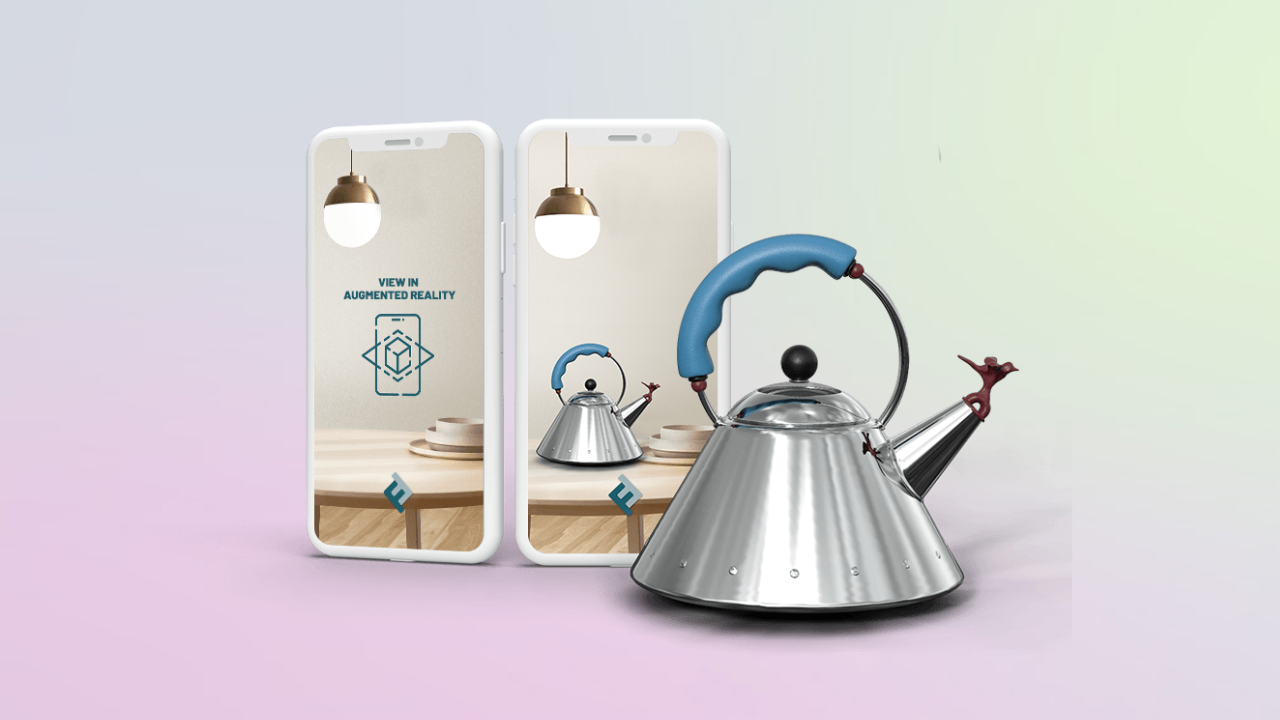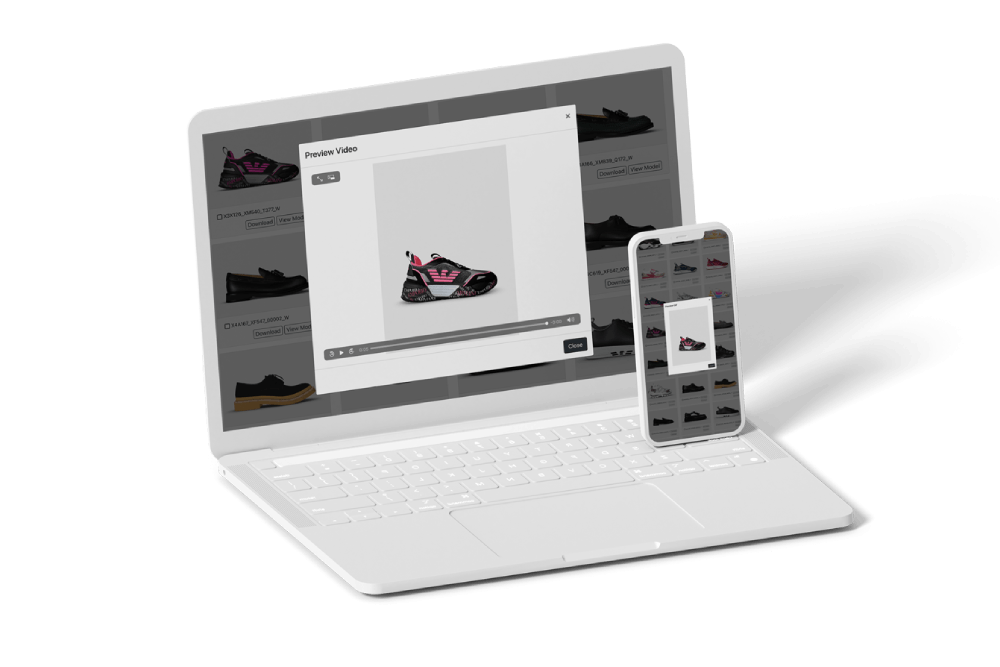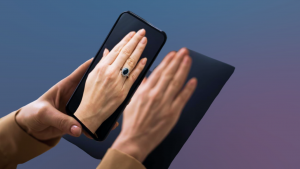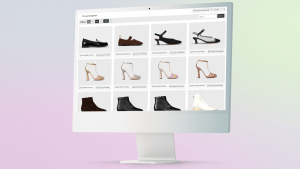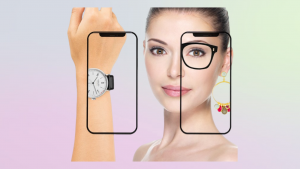What if you could try your products closely before making a purchase? Sounds exciting. Isn’t it? What if you could demand a touch for the latest makeup or new furniture to check whether it suits your requirements? Well, that’s where Augmented Reality for e-commerce comes into existence.
Augmented Reality is where you add digital elements to your real world (virtually) to provide an accurate worldview. Augmented Reality for products overlays digital images over physical objects. Augmented Reality makes you interact with the virtual object just as if it were ordinarily present.
How Augmented Reality Works
The device that supports the AR features uses the lens to scan out the object on which its digital impression must be laid on its algorithm and software, then measures out the distance of the object, and finally, the object is digitally placed over it. The AR image appears as an enhanced version of the actual physical world.
Some Real-Life Augmented Reality Examples
Here are some well-known examples of AR applications:
1. Snapchat
Snapchat has catchy and fashionable filters. The core process apps like Snapchat use is applying these filters on the user’s face. First, artificial intelligence is used to detect the face. The user’s visage is then digitally superimposed with various filters.
2. Pokémon Go
Among the best uses of Augmented Reality technology is Pokémon Go. After its initial release in 2016, it quickly gained popularity among individuals of all ages. The idea was to develop a game combining physical interaction with digital technologies.
Along with these, you have interior decoration apps, AR Maintenance, Google Glass, Google Street View, Google ARcore, IKEA mobile app, Weather Channel studio effects, etc.
The world is under the strong influence and usage of technology and digital experiences. Businesses are on the verge of escalating their business by adopting strategies and modifying tactics to strengthen their bond with the customer to appeal to and connect with their target customers.
According to recent studies, AR has gained the tag of one such digital marketing tactic that is quickly earning attention and increasing the purchase level while boosting sales in business.
8 Ways Augmented Reality Helps Boost Your Sales
AR experiences can increase sales in several ways, including improving the shopping experience, raising customer engagement, and giving customers helpful information. The following are ways in which AR can boost sales:
- Enhance Your Level Of Customer Satisfaction
Research indicates that customers are more inclined to buy from a business that offers product customization and tailored experiences. The most effective method for displaying particular aspects not visible in pictures is to include AR in any real-world environment. Its interactive digital platform helps buyers make informed decisions to choose products with realistic animations and customs, highlighting the best features on one screen.
Through the use of AR in business, this interactive, personalized shopping experience also enables the customer to see a fictional thing in any realistic setting, as it saves time. Customers can shop online instead of making the time-consuming trip to offline shopping.
- Choose the Correct Target Audience before Promoting
One of the first things in business is to identify your target audience, and with the correct target market, you can hatch the eggs of marketing effectively. AR can help you identify and increase your target audience.
All you have to do is find a client, understand its high purchasing and demanding power, and simultaneously conduct market research to detect what kind of products your customers like or demand.
- Increase Your B2B Sales With Engaging and Interactive AR Product Presentations
Clients prefer to clearly understand the product’s characteristics while selling to retail establishments and other groups. B2B sales can benefit from AR technology as it seeks to alter how customers interact and engage with products.
This is particularly valid for ideas for future works of art. For instance, it could be challenging for clients to picture a structure that isn’t yet finished. They can get a glimpse of the potential structure through Augmented Reality before it is ever constructed.
- Let AR Revolutionize Your Telecommunication and Other Technical Issues
The way we assist our clients with technical issues might be revolutionized with Augmented Reality service assistance. Mobile teleconferencing between support staff and users is one of the most prominent ways this technology can benefit users. Markers that the user can see in 3D space can be drawn on the screen by the support agent on the other end of the conversation.
This is very useful for tasks like troubleshooting computers. To assist the customer, the technical support representative can draw a circle around the area of interest by just having the user point their camera at their computer. Then, using their smartphone as a window, the user may see the circle in three dimensions. This can significantly simplify remote support.
- Create a More Seamless Experience Finding Products at a Store
In a store, it’s common for customers to find themselves aimlessly searching for specific items. It’s much more annoying when you’re pressed for time. Thanks to Augmented Reality technology, customers can more easily explore even the largest stores and discover what they’re looking for. Shops can utilize AR to let customers virtually search through aisles, find what they’re searching for, and bring it home.
- Develop Your Interactive Features at the Point of Purchase
When the sale is being conducted, Augmented Reality can be used to include interactive elements in the sales process. Customers are more likely to purchase interactive products; therefore, this will increase sales for you. For instance, if you sell a car, you can upgrade the model with climate control and seat adjustment options. Customers will find it simpler to purchase your goods due to not needing to visit a showroom to do a test drive.
- Navigation and Promotion within the Store
AR in retail can make it easier for shoppers to find specific products and traverse stores. Businesses can also utilize AR to target customers with promotions, discounts, and special offers based on where they are in the store, encouraging impulsive purchases and boosting sales.
- Before Purchasing, Show Customers How a Product Will Look in Their House
Most companies utilize Augmented Reality for products to let clients see how a item will look in their homes before they make a purchase. Using AR for products, customers can also see how a product would seem in a particular room of their houses. This will assist customers in selecting the best product to purchase. For instance, if you sell furniture and other household goods, you can display how those products will appear in a particular room of a customer’s home before making a sale. Customers will know how the goods will look in their homes, which can help you improve sales.
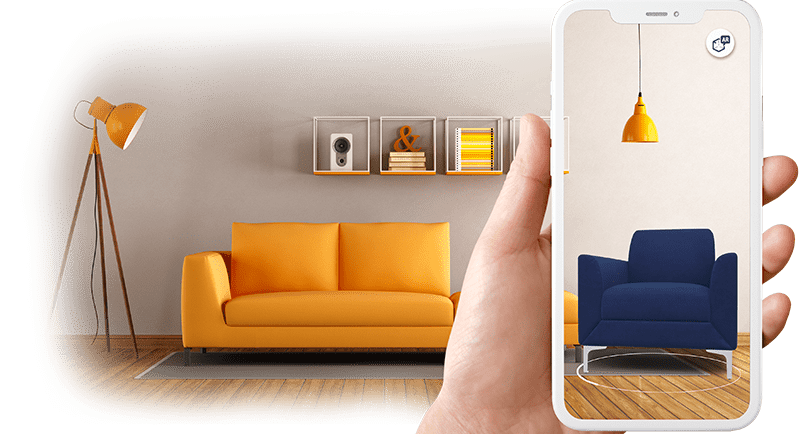
In these points, we familiarize you with how installing an AR can boost your sales performance for products. AR provide significant cost savings advantages to businesses by reducing the need for travel, improving the accuracy and efficiency of tasks, and reducing errors and waste.
Along with this, it also drives innovation and helps businesses explore new business models and revenue streams. Businesses can expand their offerings and increase revenue by creating new digital products and services or providing customers new ways to engage with existing products and services.
How to Implement Augmented Reality for Products in Business
Business worldwide uses Augmented Reality technology solutions for multiple outcomes as they increase sales, improve brand performance, showcase product demonstrations, streamline workflows, etc.
Before installing Augmented Reality for products in your business, here’s how you can implement it:
- Define your business goals: Search out how AR technology will help you achieve your goals, such as increasing sales, customer engagement, or enchaining brand awareness.
- Recognize your target audience: Look for an audience benefitting from the AR experience.
- Search for AR solutions: Dig into AR solutions that best fit your business needs, budget and others. Zakeke’s AR Viewer could become your best ally: easy to implement, easy to use, and no IT skills needed. It allows e-commerce brands to showcase their products using AR by simply using a QR code or a link instantly;
- Design AR content: Create content relevant to your business’s products and AR experiences – what is better than social media for promotions? Use social media to attract and retain the interest of your target audience. Go for AR marketing tactics, email marketing, offers, displays, etc.
- Track down your results: Measure your results for implementing Augmented Reality for products in your business. Collect feedback, monitor and modify strategies effectively optimize your AR strategy and improve the overall user experience.
Why Does Data Security Matter in AR Implementation?
AR applications and software collect and store many different types of data in the form of user location, biometrics, interactions, feedback, preferences, etc. As we know, every data is sensitive and personnel AR applications are prone to cyberattacks like phishing, malware, and spoofing, and they, in turn, compromise the integrity and confidentiality of data.
Therefore, you should address metaverse cybersecurity challenges and implement security measures to protect your AR product data from unauthorized access. You can adopt measures like two-step authentication, encryption for data security, authorization, antivirus software, etc., to make a fast and better implementation of AR Technology.
Install a solid and advanced encryption technique to secure your data. Encryption plays a vital role in managing the security of AR data as it protects sensitive information and upholds the user’s privacy by providing cutting-edge encryption techniques such as end–to–end encryption and homomorphic encryption. By creating a solid barrier against eavesdropping and unauthorized access, these cutting-edge encryption techniques promote a safe augmented reality environment where users can interact in confidence and privacy.
Conclusion
Customers today want AR technology to be implemented but the most important thing about implementing AR is having its understanding with this article we ensure to deliver the best possible information and understanding towards – how AR can boost your business scales.
Get your e-business the benefit of Augmented Reality for products and boost your business performance.
Grace Smith
Grace Smith has an in-depth understanding of the technical, strategic and commercial aspects of digital marketing. She writes about information management and digital marketing and contributes to various websites.

